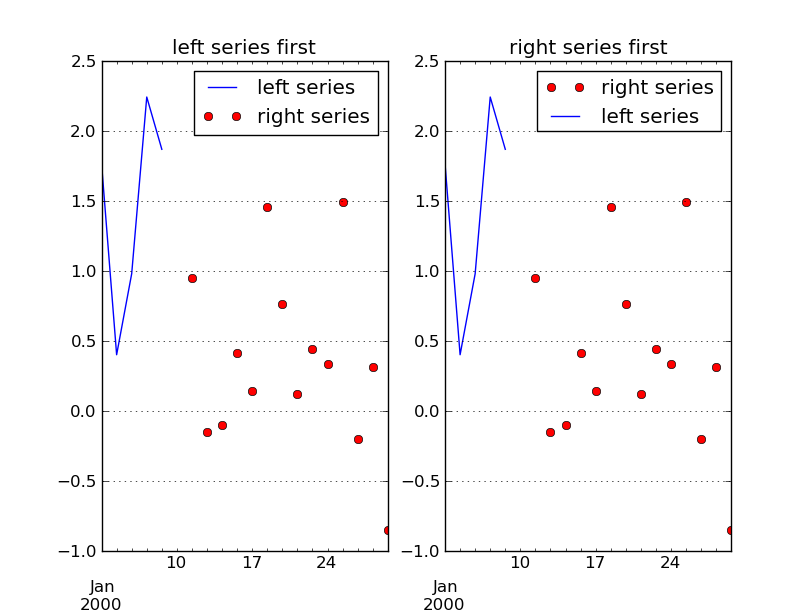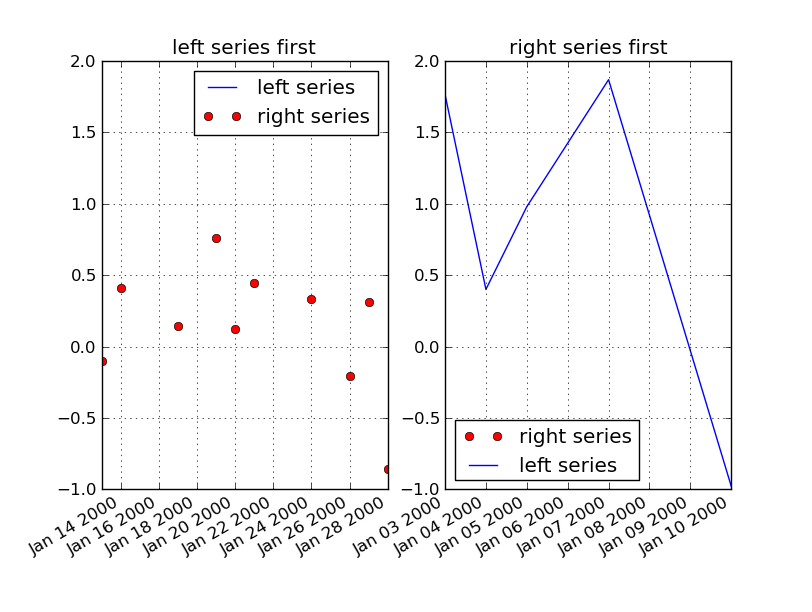You signed in with another tab or window. Reload to refresh your session.You signed out in another tab or window. Reload to refresh your session.You switched accounts on another tab or window. Reload to refresh your session.Dismiss alert
In the following I took the extreme case where there is no overlap between the two indexes for illustration purposes. When there is some overlap there is still the same issue and the last plotted timeseries is dictating the xaxis range.
What you get for the regular timeseries case is what you expect, i.e. the order you plot timeseries doesn't matter and the xaxis range is the union of the two timeseries indexes:
but what you get for the irregular timeseries case is rather suprising:
There are easy work-arounds, like aligning the timeseries before plotting, but it feels like irregular timeseries shouldn't be second-class citizens compared to regular ones.
The text was updated successfully, but these errors were encountered:
Just wanted to note that I am working on this. A 1-line change can clear up the example presented above, all tests pass, and I think it's "correct", but unfortunately it then exposes a deeper version of the regular/irregular timeseries mismatch issue I noted in #6608. I'm tempted to try and fix both at once.
In the following I took the extreme case where there is no overlap between the two indexes for illustration purposes. When there is some overlap there is still the same issue and the last plotted timeseries is dictating the xaxis range.
Here is the code, tested on pandas 0.13.1:
What you get for the regular timeseries case is what you expect, i.e. the order you plot timeseries doesn't matter and the xaxis range is the union of the two timeseries indexes:

but what you get for the irregular timeseries case is rather suprising:

There are easy work-arounds, like aligning the timeseries before plotting, but it feels like irregular timeseries shouldn't be second-class citizens compared to regular ones.
The text was updated successfully, but these errors were encountered: